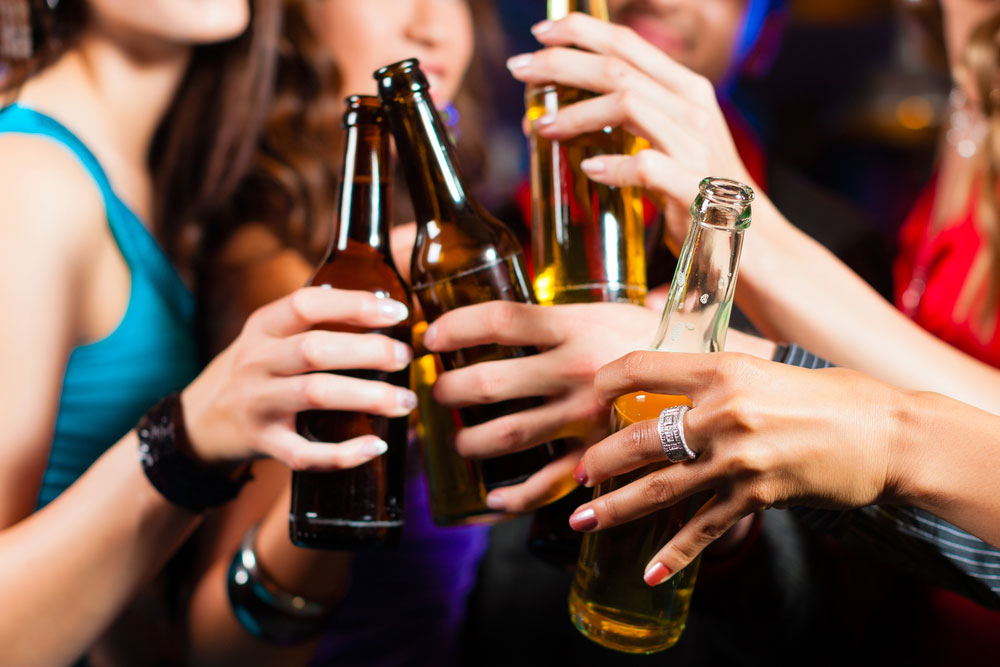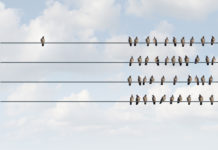According to a recent international analysis published by the British Medical Journal (BMJ) Open, for the first time ever, the gap between men’s and women’s drinking habits is closing.
The report highlights that although traditionally men have been more likely to drink alcohol than women – and drink in amounts that are detrimental to their health – that’s no longer the case.
After analyzing four million people born between 1891 and 2001, and 68 relevant studies published internationally between 1980 and 2014, researchers found out that in the early 20th century men were more than twice as likely to drink than women, and more than three times as likely to develop problems related to alcohol consumption.
In contrast, men from around the world who were born between 1991 and 2000 were only 1.1 times more likely to drink more alcohol than women born in the same time period. The researchers also suggested that women who were born after 1981 may drink more than men.
Changing traditional gender roles
While researchers did not delve into the reasons why women appear to be drinking more than ever before, the author of the study Dr. Tim Slade, of Australia’s National Health and Medical Research Council, speculated that it could be due to the fact that “increased participation in higher education and the workforce came with increased pressure to drink.” He added that it could also “be that women are under more strain or experiencing more stress.”
Slade concluded that in order to combat alcohol abuse, public health service campaigns should be aimed at both men and women, and that “young women, in particular, should be the target of concerted efforts to reduce the impact of substance use and related harms.”
Instead, young women are often targeted by alcohol advertising/marketing campaigns.
In recent years, there has been an increased effort from the alcohol industry in various parts of the world to market their products to women who like to drink for different reasons — to help with anxiety, to unwind, to celebrate, etc.
Brands like Lambrini and Skinnygirl Cocktails are a couple of very profitable enterprises created to entice women to drink more, and numerous women’s magazines and digital publications regularly offer advice on how to order, prepare and drink alcohol.
Award-winning journalist Gabrielle Glaser was the first person to document that American women are drinking more often than ever, and in larger quantities than ever before. She looked at the problem from many angles and became concerned by marketers targeting very young women when she wrote the NY Times bestselling book ‘Her best-kept secret – Why women drink and how they can regain control.’
“You used to go into a liquor store and be able to buy vodka, gin, bourbon, rum, and whiskey,” she said. “Now, it’s like a lady isle, seriously. It’s pink. It’s like a baby girl had just been born.”
Glaser said that she doesn’t think that drinking is necessarily bad but she believes that women, particularly young women, should be aware of what is being marketed to them, and how.
“Before, young women in bikinis were selling beer to men,” Glaser said. “Now young women in bikinis, or the equivalent of bikinis, are selling drinks to other women. Ads are like ‘Here, be cool, join the party,’ as if that was required to have fun.”
Social media also entices women to drink. Facebook features hundreds of groups and pages with titles like ‘mommy needs wine’ — most of them are followed by thousands of women. Yet many people who work with women agree with Slade and associate the increase in alcohol consumption among women with different societal roles and amplified responsibilities.
“The motivation to escape can throw women into all kinds of addictions,” said Shan White, life coach at Women’s Peak Performance Coaching. “Depending on many variables, it could be addictive shopping, shoplifting, drugs, alcohol, food, sex or being a workaholic.”
Glaser pointed out that academic prosperity could be directly linked to alcohol abuse for women.
“Epidemiologists who have studied this think that getting a college education is an absolute predictor in this,” Glaser said. “It sounds strange, but when you think about the college experience in the U.S., regardless of the fact that women make up the majority of the students, activities in most college campuses remain extremely male dominated and women drink alongside men, in the same way.”
Studies show that women have been enrolling in college more than men and making up a significant portion of the workforce, which could justify not only increased levels of stress but a number of opportunities to drink alcohol that didn’t exist for females when they were primarily housewives.
White believes that amidst the stress of the modern world, women need to be aware of their emotions in order to maintain a healthy balance.
“Women have the tendency to experience a gamut of emotions,” White said. “When it comes to positive emotions like love, joy, peace, and excitement, this can lead to a more enriching life. However, when it comes to negative emotions like anger, fear, stress and even a sense of uncertainty, it can create a destabilizing vulnerability in women.”
Left unchecked and unchallenged, negative emotions and unhealthy habits can have the power to drive women to keep looking to escape over and over again, White said.
How much is too much?
According to the Centers for Disease Control and Prevention (CDC), women are binge drinkers if they have four or more drinks at a single occasion and heavy drinkers if they have eight or more drinks a week. Men are considered binge drinkers if they have five drinks at a single event, and heavy drinkers if they have 15 or more drinks a week.
The CDC claims that long-term health risks associated with excessive alcohol intake and binge drinking include alcohol dependence, mental issues such as anxiety and depression, high blood pressure, and heart disease. Short-term health risks include alcohol poisoning, risky sexual behaviors, and injuries such as drownings and burns.
According to the Dietary Guidelines for Americans, moderate drinking is described as… (continue reading)
















